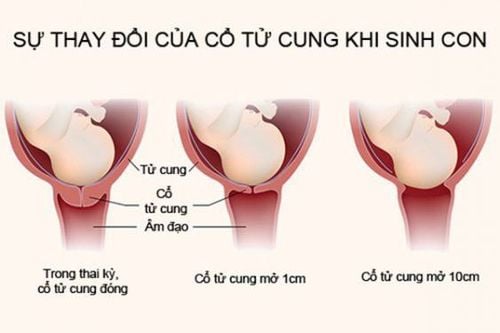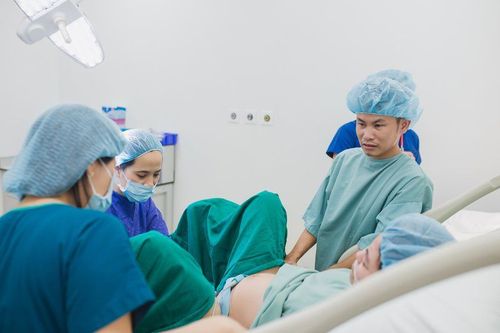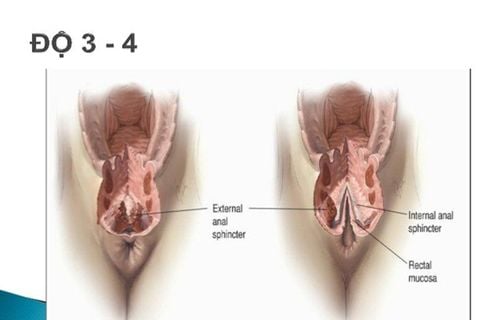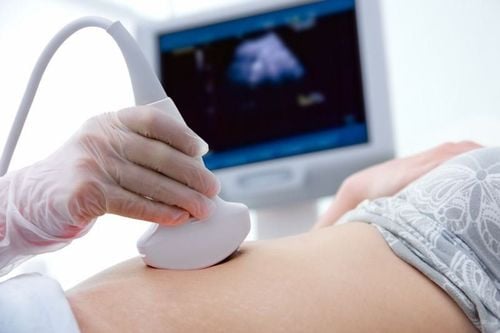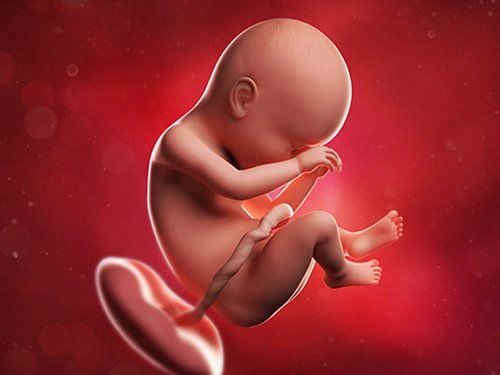This is an automatically translated article.
What kind of contractions are admitted to the hospital is probably the question of many pregnant women, especially those who have just given birth for the first time. In fact, there are many mothers who are confused between physiological contractions and actual uterine contractions.
1. What are labor contractions?
Labor contractions are classified into 2 types: full-term labor contractions which usually occur after 37 weeks and preterm labor contractions which usually occur from 22 to 37 weeks of pregnancy.
When labor contractions really appear, the pain of pregnant women will gradually increase and last longer, not only that, but also the frequency will be more intense. These are signs that the mother's childbirth will take place in the next few hours, depending on each person's location, but there are different labor times.
2. Distinguishing uterine contractions
During pregnancy, it is easy to confuse uterine contractions because they have similar signs. To distinguish, mothers should rely on the following characteristics.
Physiological contractions:
The duration of physiological contractions is very short and intermittent, only about 30s - 60s/time; Every time a physiological contraction comes, the pregnant woman is not too painful, can bear it; Physiological contractions often appear when the fetus moves, the cause may be a leaky bladder full of water, the mother's impact on the abdomen or when the couple has sex; Physiological contractions show no signs of gradual increase and pain level does not increase; Physiological contractions can also appear when the mother feels tired and walks a lot. Real labor contractions:
When the real labor contractions come, pregnant women will feel pain in the back or lower abdomen. The pain gradually increases and spreads throughout the abdomen, accompanied by pain in both thighs or 2 sides; When the real labor contraction occurs, the pregnant woman will feel the pelvic area stretch and squeeze very strongly; The pain of labor contractions is similar to menstrual cramps but the intensity will be much stronger; True labor contractions will continue to appear even if the mother has been resting or drinking water, it will not be relieved; Usually, true labor contractions will begin to appear with mucus plugs, light pink bleeding Preterm labor contractions:
If labor contractions occur before 37 weeks, that is a sign signs of premature birth or threatened preterm birth. Pregnant women will have uterine contractions after 10-12 minutes for about 1 hour. During contractions, the pregnant woman's abdomen will tighten and harden. Some accompanying symptoms such as:
Dull back pain and abdominal pain. Abdominal and leg cramps of pregnant women. Pregnant women feel pressure in the abdomen or pressure on the pelvis. In particular, if uterine contractions are accompanied by other serious signs such as vaginal discharge (broken water), vaginal bleeding and diarrhea, pregnant women should go to the hospital immediately to be examined and treated by a doctor. timely.
3. How are uterine contractions about to give birth?
Unlike Braxton - Hicks contractions, true labor contractions will appear and they are difficult to go away with simple methods such as rest or drinking lots of water.
If a pregnant woman wonders "what is a uterine contraction like about to give birth?" then please pay attention. Real labor contractions will happen continuously and become stronger and more frequent. These uterine contractions will make the uterus of the pregnant woman thinner and gradually open so that the fetus can come out.
True labor contractions signaling the impending delivery will be divided into 2 phases, including: Prolapsed uterine contractions and active phase, specifically:
3.1 Uterine contractions of latent phase labor At this stage, pregnant women will feel the increase of uterine contractions with the characteristics of tightening and stretching in the abdomen. During this latent phase of labor, the uterus of the pregnant woman will contract continuously and help the cervix thin and widen to make it easier for the fetus to come out.
For each different woman, the uterine contractions at this stage will not be the same. However, they have a common feature that will take place from about 30 - 90 seconds. Initially, uterine contractions will take place gently, the pregnant woman is only slightly painful at this time. However, after that, the uterine contractions will be faster and more continuous. At the end of the latent phase, the interval between uterine contractions shortens to about 5 minutes. Along with that, the pregnant woman will feel her cervix is gradually opening, pink mucus also appears and even someone will have their water broken right now.
3.2 Uterine contractions in active phase labor At this stage, uterine contractions will be much stronger and more intense. At this time, the cervix of the pregnant woman will be fully dilated (from 4 to 10 stools) so that the fetus can easily come out. Along with uterine contractions, pregnant women will experience back/body aches or leg cramps.
In the active phase, labor contractions will take place about 25 - 60 seconds with 3 - 5 minutes. When entering active phase labor is also the time when pregnant women should notify the doctor to promptly check and be ready to deliver.
4. The mother comfort in uterine contractions
When faced with uterine contractions, most pregnant women do not feel comfortable. To make this phase go smoothly and the pregnant woman's spirit is not affected much, do things like:
Change position or walk, but stop to breathe between contractions. ; If during pregnancy, the pregnant mother meditates, please use this time; Listen to music that pregnant women love; Sucking or sucking on a candy bar if pregnant women feel nauseous; After 9 months and 10 days of heavy weight, pregnant women entered labor and faced a level of labor pain comparable to 20 broken ribs at the same time. In order for the birth to go smoothly and safely, pregnant women need to understand:
How the labor process takes place, how long does it usually take to have a normal delivery or caesarean section, to protect the best health for the unborn baby. Methods to relieve pain during childbirth, limit pain and relieve psychological pressure during labor. The way to push and breathe during childbirth is usually the right way so that the labor takes place quickly, the pregnant woman does not lose strength during childbirth. How to control postpartum uterine contractions in the shortest time. How to take care of the perineal suture does not cause infection and dangerous complications. Early postpartum re-examination to detect dangerous abnormalities such as residual placenta, missing gauze. Take care of newborn until full month healthy. To ease the pain of childbirth, Vinmec offers a full Maternity program with a complete "painless delivery" service during and after birth using non-morphine epidural and sedation techniques. ashamed. During the birth process, the mother will be guided by the midwives on how to push and breathe properly, the baby will be born in just 10-15 minutes. After birth, the baby will be cared for in a sterile room before being returned to the mother.
Pregnant women will rest in a high-class hospital room, designed according to international hotel standards, 1 mother 1 room with full facilities and modern equipment. Mothers will be consulted by nutritionists on how to feed the baby before being discharged from the hospital. Postpartum follow-up with both mother and baby with leading Obstetricians and Pediatricians.
Please dial HOTLINE for more information or register for an appointment HERE. Download MyVinmec app to make appointments faster and to manage your bookings easily.




